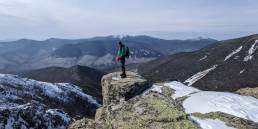While splitboarding does have many similarities to backcountry skiing, there are some subtle but important differences in the locations where participants prefer to “earn their turns.” First, when in touring mode, one is essentially skiing on two very large, heavy, and awkwardly shaped “skis.” This is simply a snowboard cut down the middle into two halves. Also making an approach more challenging are snowboard-style bindings and boots and the fact that many snowboarders have never skied.
While backcountry skiers often have no issue with rolling up and down hills or navigating tight icy turns on the way to a climb, many splitboarders prefer an approach that is relatively flat or continuously uphill. Secondly, splitboarders desire the same consistency, albeit in reverse, on their descents. While backcountry skiers can climb a short stretch of flats or rise in the middle of their descent, for a snowboarder, this means getting off your board to skate or carry it. Or, worse, you convert back to touring mode before another conversion to descend again.
Whether you’re a beginner looking to learn to skin at the resort, or a die-hard extremist seeking out that adrenaline rush, the Northeast does have some fantastic places to splitboard.
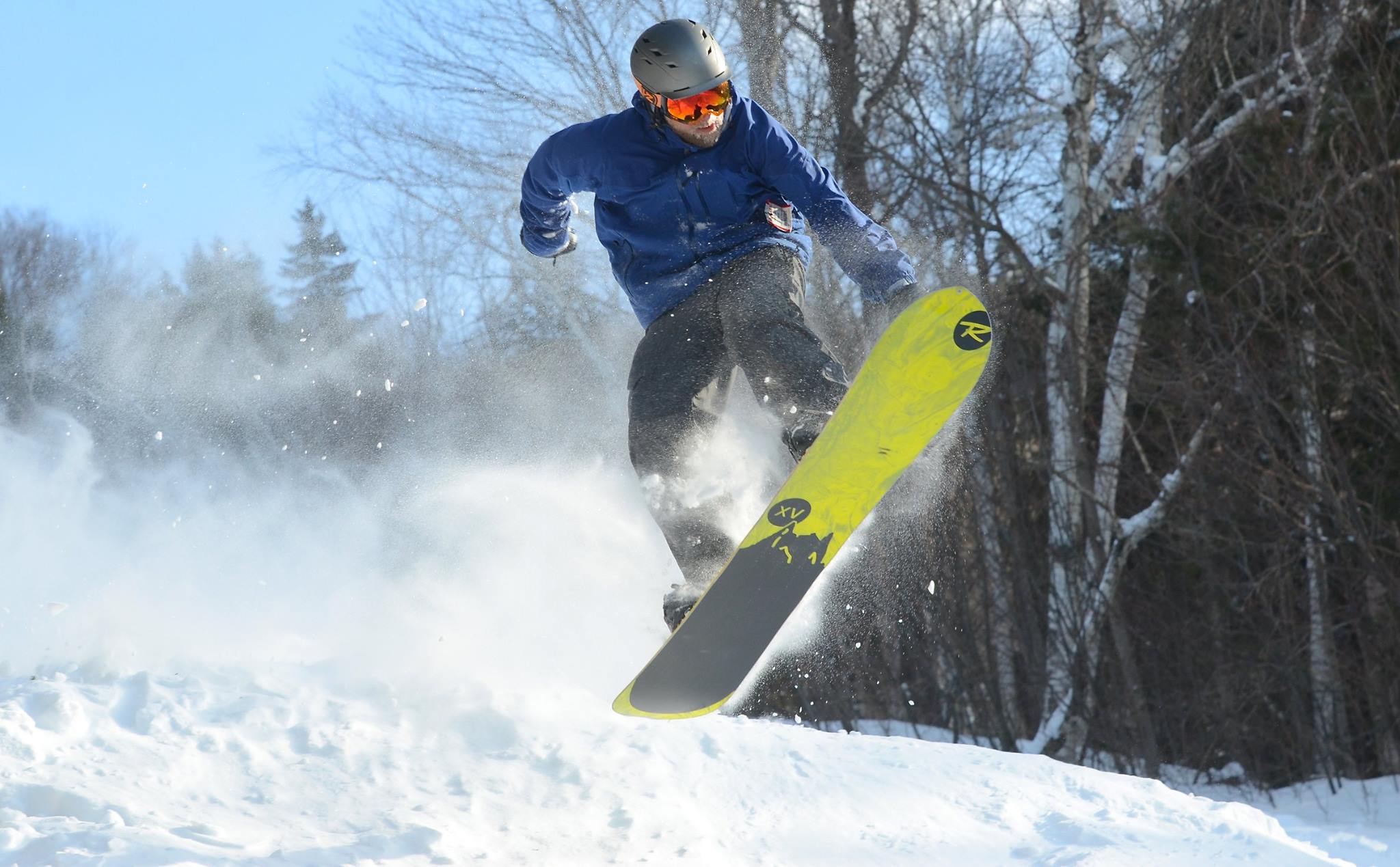
Magic Mountain, Vermont
A great way to get the hang of skinning and transitions as a beginner, or to just get some laps in, is to tour on resort trails. More and more resorts that used to frown on uphill travel are introducing policies that allow for such use during certain times, on certain trails, or with the purchase of an uphill pass. Magic, however, takes it a step further. Not only do they encourage uphill travel and riding anytime, anywhere, but they also celebrate it.
Use your own power to climb to the summit for a run. Or, stop to see a summit lift attendant, and they will give you a token to take one lift-serviced run on the house! Doing three or four laps with the skins gets you three or four runs on the lift and spells a free day of riding on a neat little mountain. All they ask is you consider grabbing a burger or beer at the lodge as a thank you! Find Magic off VT 11 just down the road from Bromley Mountain, right outside of Londonderry.
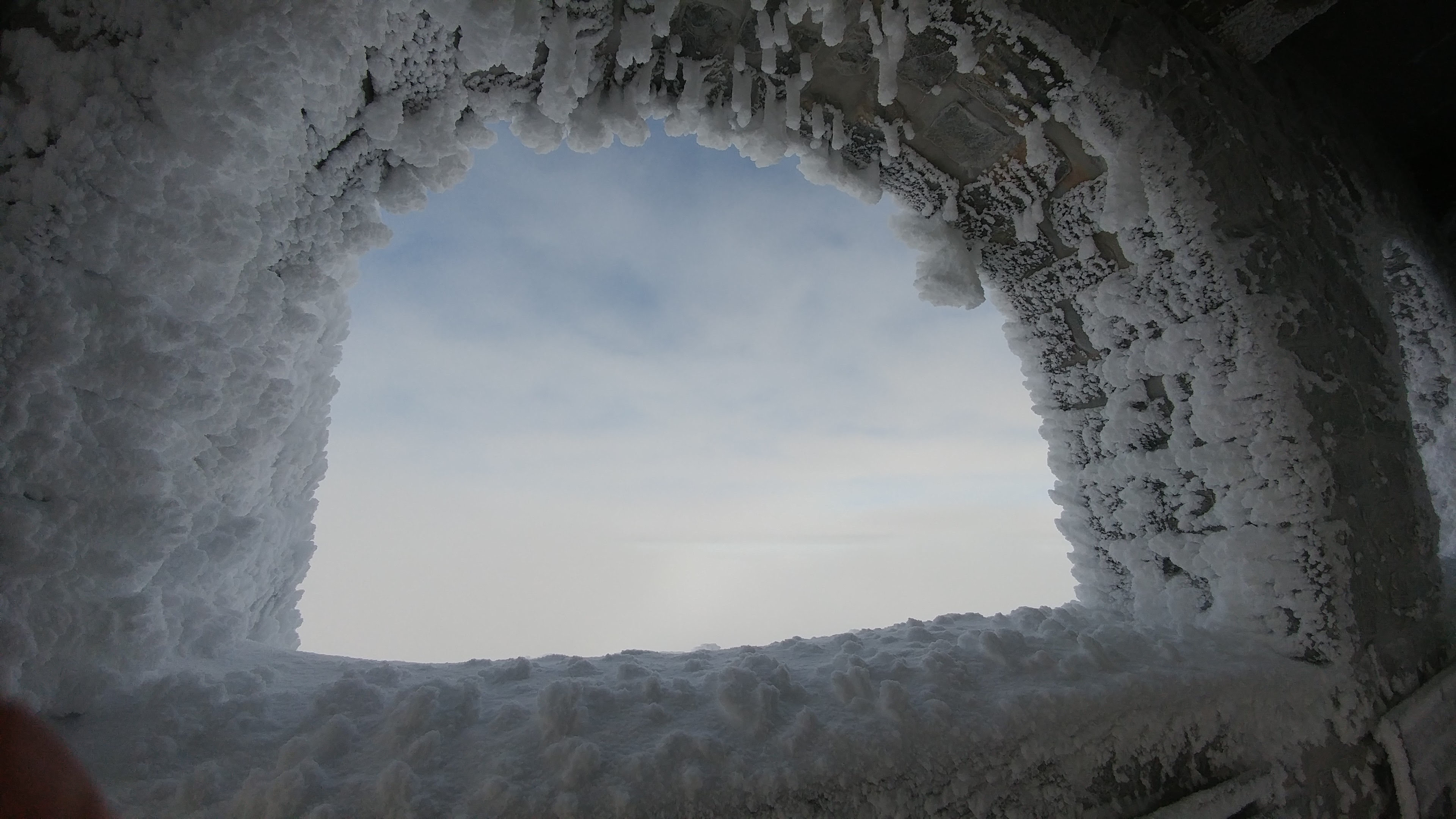
Whiteface Veterans Memorial Highway, New York
If you’re looking to get laps on the resort trails, here, you will have to stick to dawn patrol—only permitted with an uphill pass and outside of operating hours. However, the toll road, which runs up the mountain’s backside, is a local favorite for touring. Whiteface Veterans Memorial Highway typically is the first “ski” of the early season and provides a gentle cruise down. For more advanced riders, the toll road can also provide access to the mountain’s many backcountry slides. Find the parking lot by the toll house a few miles from Wilmington, New York, just past the intersection with Gillespie Drive.
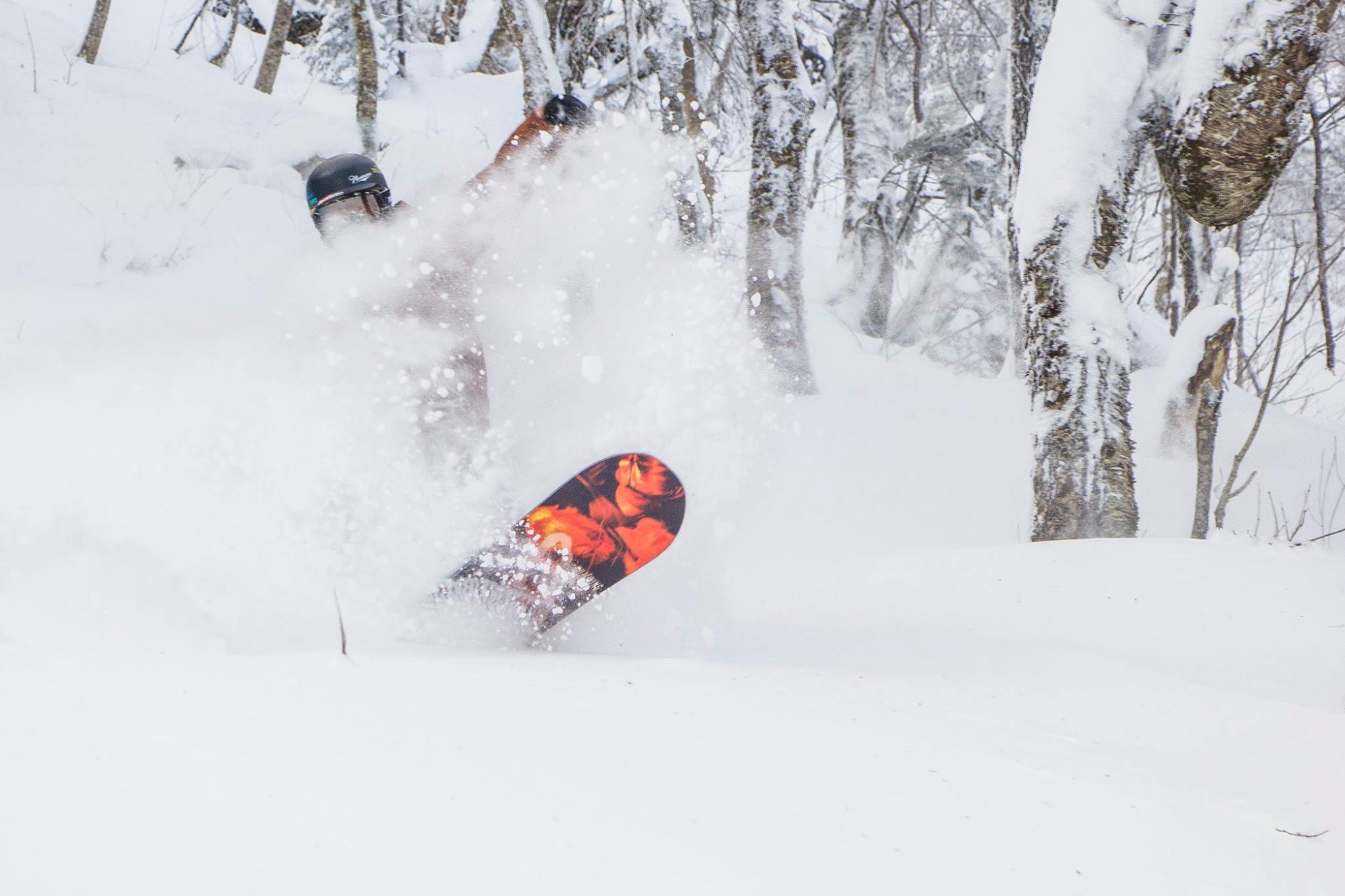
Jay Peak, Vermont
Offering what most consider some of the Northeast’s best snow and glades, Jay also has some backcountry attractions for splitboarders. Nearby Big Jay and Little Jay mountains offer some expert riding terrain, including the famous East Face of Big Jay. These glades and chutes are accessible via a ridge trail from the resort or a skin up starting on logging roads from Route 242. Be warned, though. This is a remote and challenging area, and you should be prepared, as always, for the unexpected. If you have the backcountry skills and the legendary Jay snow comes through, this can make for an epic tour.
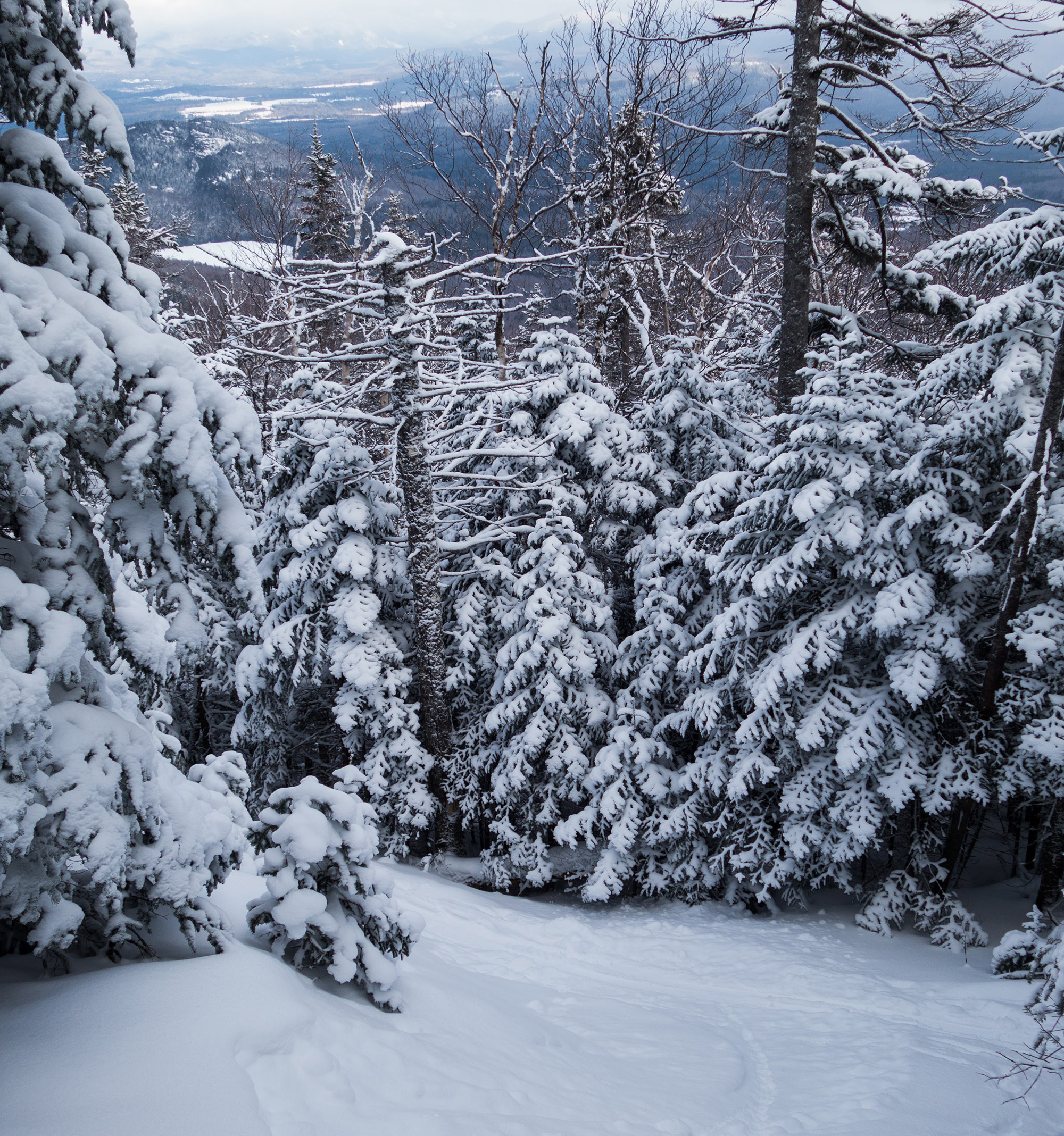
Wright Peak, New York
One of the more popular locations for Adirondack backcountry, Wright Peak offers two primary options. The Wright Ski Trail offers a classic Northeast run linked with hiking trails and other backcountry ski runs. Alternatively, the Angel Slides offer some steeper and more challenging terrain, but must be approached with proper awareness of avalanche conditions and safety. Access to the Wright Ski Trail is off the trail to Algonquin Peak, starting from the Adirondack Loj. The Angel Slides involve a bushwhack approach, leaving trails from the camping areas around Marcy Dam.
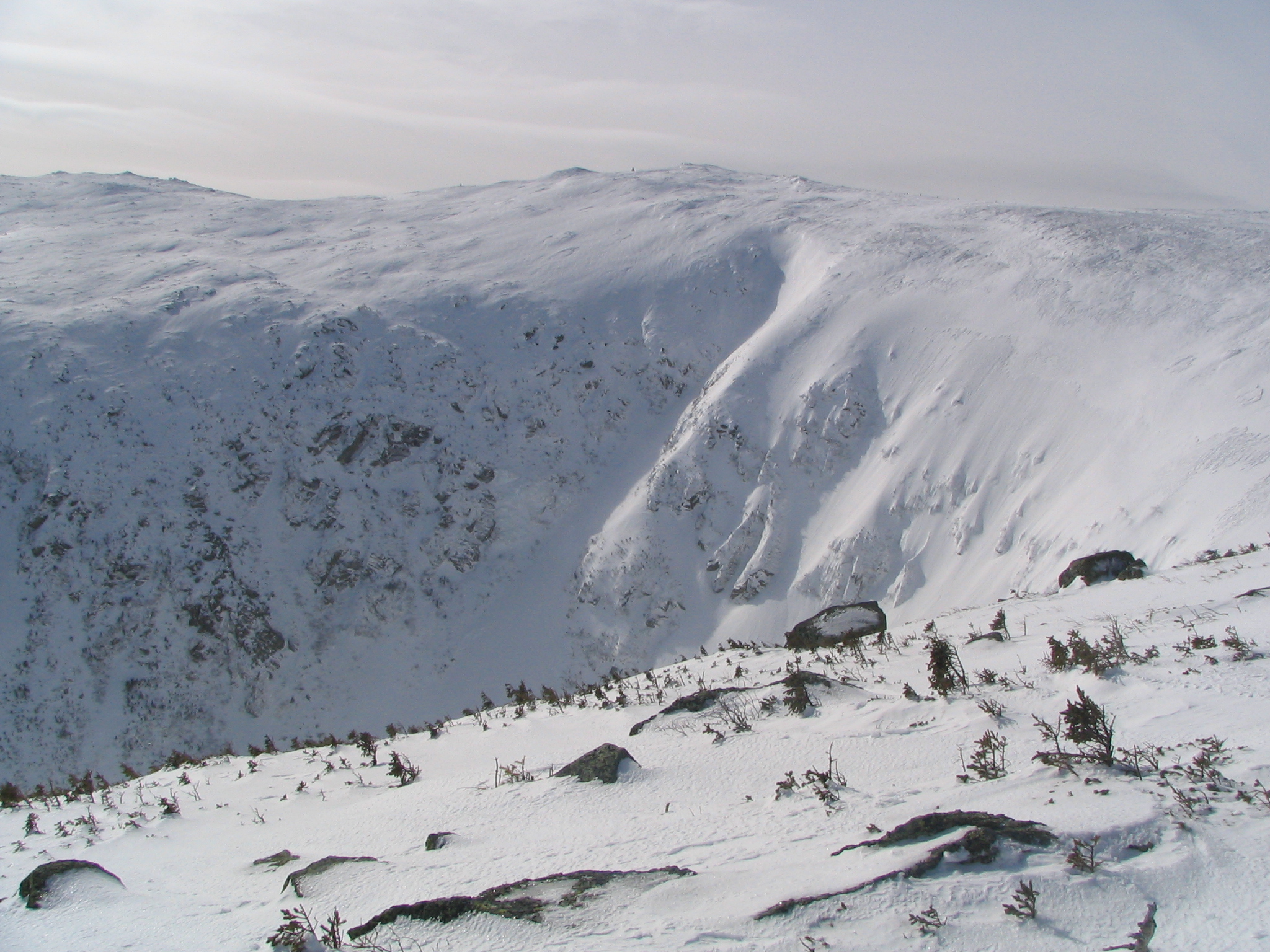
Mount Washington, New Hampshire
The many ravines, gullies, and gulfs of the Northeast’s largest peak have long been a mecca for backcountry skiing and snowboarding. Certainly the East Coast’s most celebrated center of backcountry, the famous Tuckerman Ravine area sees hordes of visitors and offers dozens of possible lines. From Pinkham Notch, plan on climbing for two to three hours up the Tuckerman Ravine Trail to the main bowl. Most paths down the headwall are expert runs, which sometimes approach 45- to 50-degree angles and may include icefall, cliffs, and crevasses. For a slightly easier run, explore Left and Right Gullies. When you have had enough, the Shelburne Ski Trail offers a fun ride back down.
While the party at Tucks is certainly worth the hype, the “Rockpile” has countless other treasures. For another open bowl with that larger West Coast mountain feel, head to the nearby Gulf of Slides. Starting from the Pinkham Notch Visitor Center, the Gulf of Slides Trail climbs moderately for 2.5 miles to the base of several large gullies up the ridge between Boott Spur and Slide Peak.

Mount Greylock, Massachusetts
The highest point in Massachusetts is also home to the legendary Thunderbolt Ski Trail. Starting at a parking area on Thiel Road just outside of North Adams, the Thunderbolt climbs over 2,000 feet to get close to Mount Greylock’s summit. This trail was home to many classic downhill races, and in the present, local groups keep this backcountry must-do in great shape. It is steep in sections and definitely an expert run. On a cold day, climb the extra few hundred feet from the top of the ski trail, using the Appalachian Trail, to the summit, where you can warm up in a large stone hut equipped with a wood stove.
Lucas LaBarre
Lucas LaBarre grew up in the Adirondack Mountains of upstate New York. An avid year round hiker, Lucas has completed many peakbagging lists in the Northeast including the Adirondack 46, the Winter 46, the NH 48, the NE 67 and the NE 111. He also enjoys backcountry snowboarding and splitboarding throughout the Northeast and beyond. He lives in Albany NY with his wife and daughter and works as an educational administrator.
Related Posts
April 12, 2024
Explore Like a Local: The Outdoor Mecca of North Conway, NH
There's a lot to love about this New…
April 3, 2024
5 Things To Do in the Boston Area During Mud Season
Adventure opportunities are abundant…




